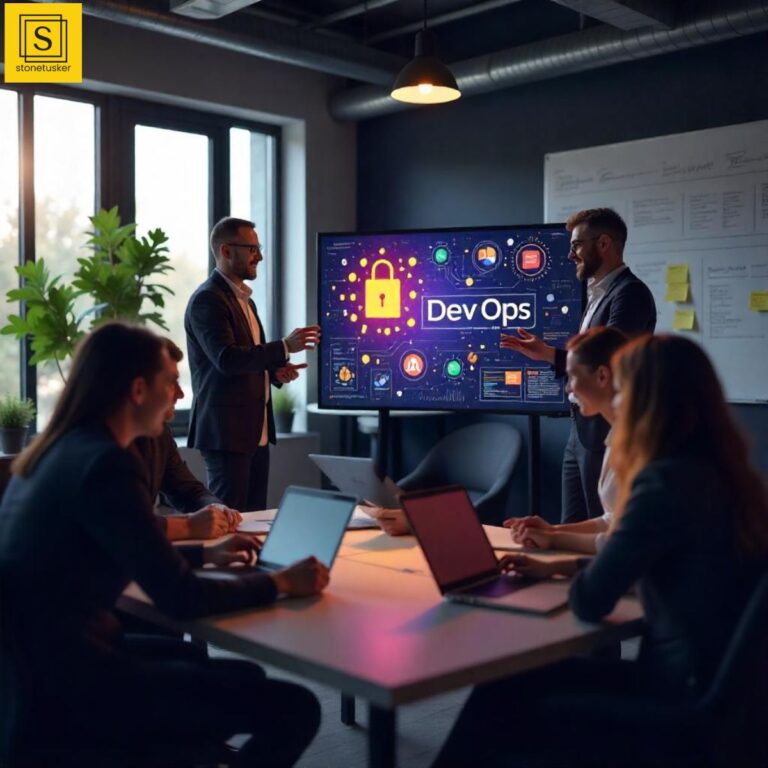Kickstart your journey by taking the interactive assessment at DevOps Assessment Tool. This article will guide you through each question, helping you gain deeper insights and make the most of your evaluation in the category: Leadership.
Leadership plays a crucial role in DevOps, CI/CD, and DevSecOps by driving innovation, enhancing security, and improving operational efficiency. This article is designed as an expert guide to help you assess leadership maturity in these domains through a series of structured questions. Each question enables you to evaluate your organization’s current practices, recognize the associated business and engineering advantages, and identify practical steps for advancement.
How to Use This Article: For each leadership question below, reflect on your organization's current state and select one of the six maturity levels: Not doing, Novice, Intermediate, Advanced, Expert, or Visionary. This self-assessment will help pinpoint strengths and gaps, guiding your leadership and teams toward higher performance and security excellence.
1. How clearly do leaders articulate a vision for the organization’s and team’s direction, including a three-year horizon that encompasses security practices?
Business Benefits: A clearly articulated vision aligns the entire organization towards common goals, ensuring strategic focus on innovation, security, and growth over the medium term. It reduces ambiguity, accelerates decision-making, and fosters stakeholder confidence.
Engineering Team Benefits: When leaders communicate a clear vision, engineering teams understand priorities and can align their work with long-term security and operational objectives, improving morale and productivity.
How to Achieve: Leaders should develop and communicate a compelling vision that integrates security as a core pillar, using frameworks like OKRs to cascade goals. Regular town halls, strategic documents, and leadership blogs can reinforce this vision.
Learn more: The Leader of the Future - McKinsey
noreferrer">Question 1 Resource2. To what extent do leaders stimulate intellectual curiosity by encouraging exploration of new questions and challenging basic assumptions, including those related to security practices?
Business Benefits: Encouraging intellectual curiosity drives innovation and continuous improvement, helping organizations anticipate and mitigate emerging security threats and market shifts.
Engineering Team Benefits: Teams feel empowered to experiment and challenge the status quo, leading to creative problem solving and higher engagement.
How to Achieve: Promote a culture where questioning is welcomed, provide time and resources for research, and recognize those who propose new ideas or improvements. Leadership training on fostering curiosity can be valuable.
Learn more: How Leaders Can Encourage Intellectual Curiosity - HBR
3. How effectively do leaders foster personal recognition by praising teams for above-average work, acknowledging improvements, and complimenting individuals for outstanding contributions, including in security practices?
Business Benefits: Recognition boosts employee motivation, retention, and performance, creating a positive culture that attracts top talent.
Engineering Team Benefits: Teams feel valued and motivated to maintain high standards, especially in critical areas like security where diligence is essential.
How to Achieve: Implement structured recognition programs, encourage peer-to-peer praise, and ensure leaders regularly acknowledge contributions in meetings and communications.
Learn more: Fostering a Culture of Recognition - Forbes
4. How predominantly do leaders follow servant leadership principles along with other leadership styles such as transformational and thought leadership?
Business Benefits: Servant leadership creates trust and collaboration, driving sustainable organizational growth and adaptability.
Engineering Team Benefits: Teams experience greater autonomy and support, leading to improved innovation and accountability.
How to Achieve: Leaders should prioritize team needs, actively listen, and empower others. Combining servant leadership with transformational and thought leadership styles fosters vision and execution.
Learn more: What is Servant Leadership? - Greenleaf Center
5. How extensively are enterprise-level Agile practices like SAFe and Scrum used across teams?
Business Benefits: Enterprise Agile frameworks improve alignment, predictability, and delivery speed at scale, essential for meeting dynamic market and security demands.
Engineering Team Benefits: Teams gain clarity on priorities, better collaboration, and faster feedback cycles, which enhances quality and security.
How to Achieve: Train teams in SAFe or Scrum, appoint Agile coaches, and implement tools like Jira or Azure DevOps to support agile ceremonies and tracking.
Learn more: Scaled Agile Framework (SAFe)
6. How well are system teams identified and using Kanban methodology while product development teams use Scrum?
Business Benefits: Using Kanban for system teams and Scrum for product teams optimizes workflow management tailored to different work types, improving throughput and quality.
Engineering Team Benefits: Teams work with methodologies that best fit their tasks, reducing bottlenecks and enhancing delivery predictability.
How to Achieve: Clearly define team roles, provide training on Kanban and Scrum, and use visual management tools like Atlassian Jira or Trello to track progress.
Learn more: Kanban Guide - Atlassian
7. To what extent do leaders encourage a strength-based model and mix team members based on strengths to create high-performance teams?
Business Benefits: Strength-based team composition maximizes productivity and innovation by leveraging individual talents effectively.
Engineering Team Benefits: Team members feel more engaged and perform better when their strengths are recognized and utilized.
How to Achieve: Use tools like Gallup StrengthsFinder to assess team members, and design teams to balance complementary skills and personalities.
Learn more: Strengths-Based Leadership - Gallup
8. How effectively do leaders allow Lean and Minimum Viable Product (MVP) practices to be followed?
Business Benefits: Lean and MVP approaches reduce waste, accelerate time-to-market, and enable early customer feedback to guide product development.
Engineering Team Benefits: Teams focus on delivering value incrementally, reducing rework and improving responsiveness to change.
How to Achieve: Encourage iterative development, use validated learning, and empower teams to release MVPs quickly for testing assumptions.
Learn more: Lean Startup Principles
9. How well is a 360-degree feedback process implemented within the organization?
Business Benefits: 360-degree feedback enhances transparency, accountability, and continuous improvement at all leadership levels.
Engineering Team Benefits: Teams receive balanced feedback from peers, managers, and direct reports, fostering personal and professional growth.
How to Achieve: Implement structured feedback tools, train participants on giving and receiving feedback, and integrate results into development plans.
Learn more: 360-Degree Feedback
10. How actively does leadership get involved in product usage and share feedback (dogfooding)?
Business Benefits: Leadership engagement in product usage ensures firsthand understanding of user experience and drives product quality improvements.
Engineering Team Benefits: Teams receive direct, actionable feedback from leadership, accelerating issue resolution and innovation.
How to Achieve: Encourage leaders to use internal products regularly, establish feedback channels, and integrate insights into development cycles.
Learn more: Dogfooding - Atlassian Blog
11. How frequently does leadership organize and sponsor hackathons or innovation workshops?
Business Benefits: Hackathons foster innovation, cross-team collaboration, and rapid prototyping of new ideas, which can lead to breakthrough products and solutions.
Engineering Team Benefits: Teams gain opportunities to experiment, learn new skills, and build camaraderie outside of regular project constraints.
How to Achieve: Schedule regular hackathons, provide resources and incentives, and celebrate outcomes to embed innovation culture.
Learn more: How Hackathons Boost Innovation - Forbes
Further Reading & Resources
- GitLab DevSecOps Security Checklist
- Ultimate DevSecOps Checklist - OpsMx
- DevSecOps Best Practices Checklist - Aptori
- DevOps Security Checklist - SID Global Solutions
- Project DevSecOps Assessments - DevSecOps Now
- DevSecOps Best Practices - TechRepublic
Books for Deeper Insight:
- Accelerate: The Science of Lean Software and DevOps by Nicole Forsgren, Jez Humble, Gene Kim
- The DevOps Handbook by Gene Kim, Jez Humble, Patrick Debois, John Willis
- Lean Enterprise by Jez Humble, Joanne Molesky, Barry O'Reilly
- Team Topologies by Matthew Skelton and Manuel Pais
Ready to Elevate Your DevOps Leadership and Security Practices?
Take the first step to transform your organization’s DevOps, CI/CD, and DevSecOps maturity by completing your leadership assessment today. If you want expert guidance tailored to your unique challenges, contact us and let’s build your path to visionary leadership together.



